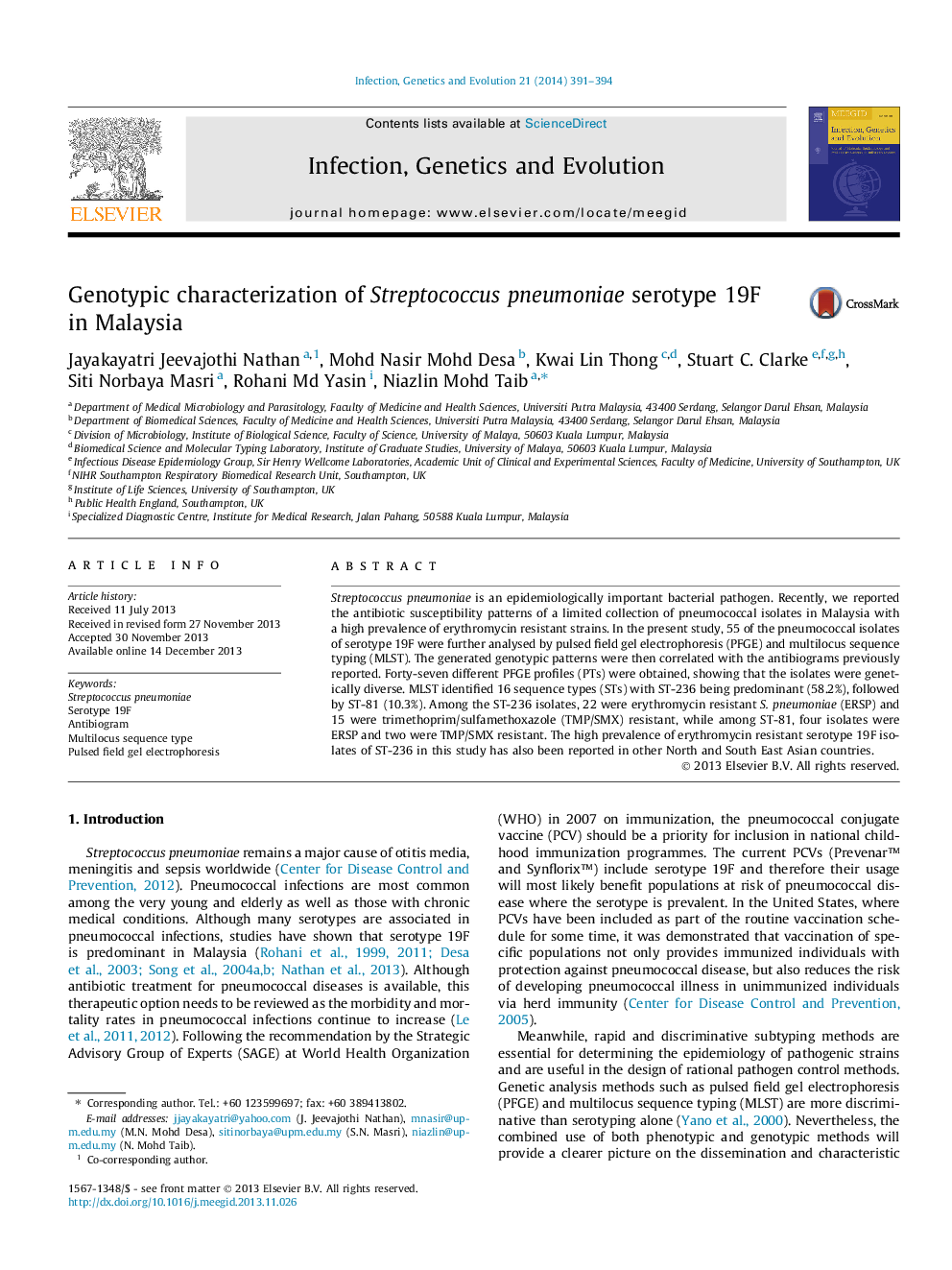| Article ID | Journal | Published Year | Pages | File Type |
|---|---|---|---|---|
| 5910251 | Infection, Genetics and Evolution | 2014 | 4 Pages |
â¢Fifty five pneumococcal isolates of serotype 19F were subjected to MLST and PFGE.â¢Forty seven different PFGE profiles and 16 different sequence types were obtained.â¢Sequence types and PFGE profiles were correlated with antibiograms of 6 antibiotics.â¢We report a high prevalence of erythromycin resistant ST-236 isolates in Malaysia.â¢Revision in treatment guidelines and routine vaccination is warranted.
Streptococcus pneumoniae is an epidemiologically important bacterial pathogen. Recently, we reported the antibiotic susceptibility patterns of a limited collection of pneumococcal isolates in Malaysia with a high prevalence of erythromycin resistant strains. In the present study, 55 of the pneumococcal isolates of serotype 19F were further analysed by pulsed field gel electrophoresis (PFGE) and multilocus sequence typing (MLST). The generated genotypic patterns were then correlated with the antibiograms previously reported. Forty-seven different PFGE profiles (PTs) were obtained, showing that the isolates were genetically diverse. MLST identified 16 sequence types (STs) with ST-236 being predominant (58.2%), followed by ST-81 (10.3%). Among the ST-236 isolates, 22 were erythromycin resistant S. pneumoniae (ERSP) and 15 were trimethoprim/sulfamethoxazole (TMP/SMX) resistant, while among ST-81, four isolates were ERSP and two were TMP/SMX resistant. The high prevalence of erythromycin resistant serotype 19F isolates of ST-236 in this study has also been reported in other North and South East Asian countries.
